The Osprey Farpoint 40 is a super popular entry-level backpack that’s loved by many budget and independent travellers.
If travel came with a literal starter pack, then this would surely be (in) it!
I, too, started off travelling with this backpack many years ago. I used the old Farpoint 40 for about 7 years on trips all around the world, and have been using the newly designed Farpoint 40 since late 2022. This is my long-term review.
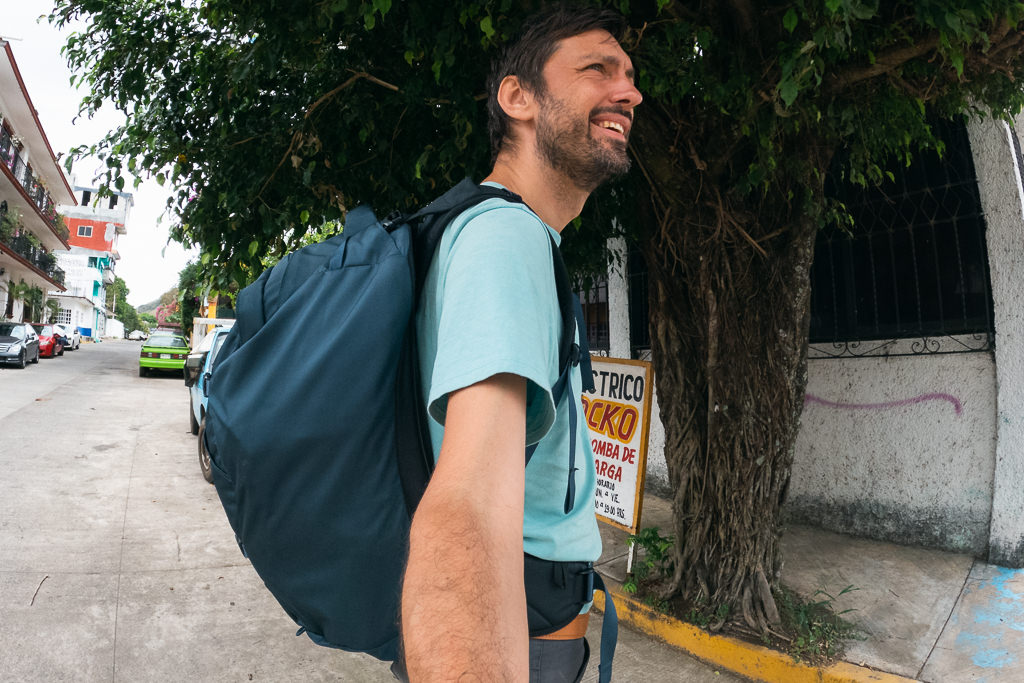
While it’s possible to nitpick about the Farpoint 40, it doesn’t really have any glaring weaknesses in my view — especially with the latest redesign.
The only thing you can truly hold against it is its somewhat basic organizational features. However, that can be overcome with accessories or smart packing.
Note: I bought this pack with my own money and this is not a sponsored review. This post contains some affiliate links, which is explained here.
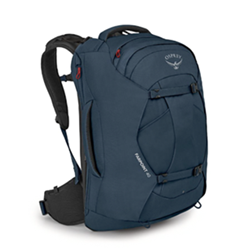
Pros
- Lightweight (1.6kg / 3.5lbs)
- Easy to use, opens like a suitcase
- Highly comfortable to wear even for extended periods
Cons
- Only basic organizational features (needs packing cubes)
Who is this backpack for?
The Farpoint 40 is a lightweight backpack ideal for budget and adventure travellers. If your travel style has you moving around a lot then this pack will help you stay mobile. It’s also suited to a wide range of travel situations.
In a nutshell, the key advantages of the Farpoint 40 are:
- Carry-on size (no need to check in)
- Lightweight at 1.6 kg or 3.5 lbs.
- Inexpensive as you can get the Farpoint 40 for around 165 Euros or 185 US Dollars, which is an attractive price for a backpack of this kind. You can check the latest prices and models at Osprey.
- It opens like a suitcase and not from the top. This is ideal for staying in hotels or hostels.
- It’s designed for the outdoors. It will do well in adverse weather, and the comfortable harness is clearly inspired by hiking backpacks.
There is no rain cover included with the Farpoint 40. However, I’ve carried it through the pouring rain for hours on end without problems (it was during a tropical downpour in Nepal, no less!). The zippers are actually very well protected against rain, being covered by some of the outer fabric.
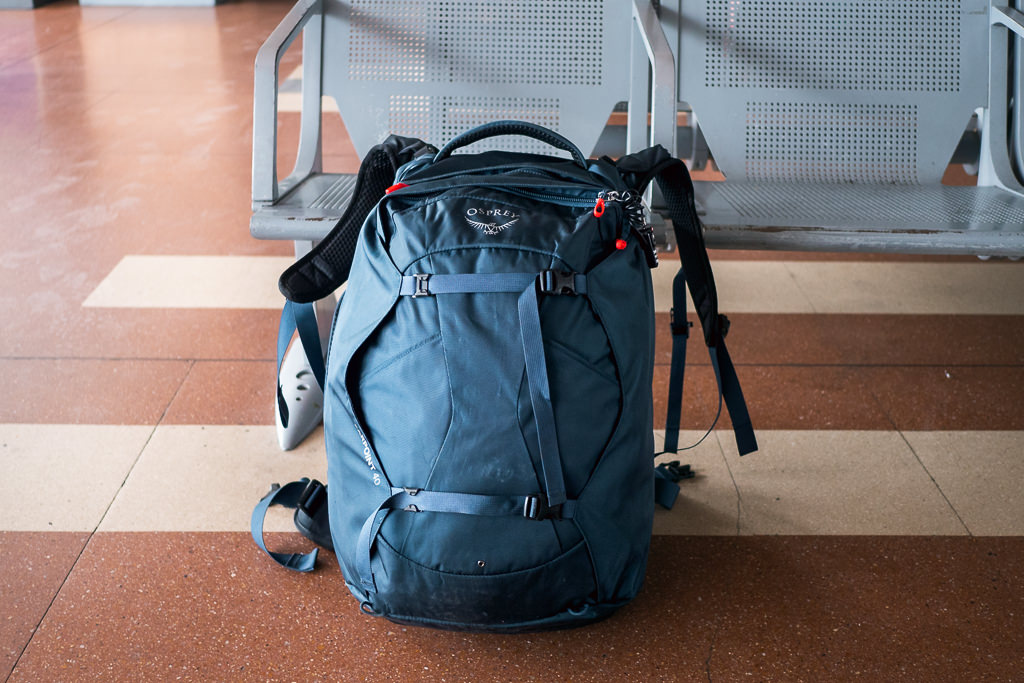
If you’re a backpacker or independent traveller then this backpack will likely really suit your needs. Unlike some purely urban-style packs, the Farpoint 40 is comfortable to carry for extended periods of time, which is helpful when navigating places by foot or travelling using public transport.
The Farpoint 40 is especially ideal for certain trips. It’s pretty much 100% perfect for backpacking Southeast Asia, for example. It’s just the right size for the stuff you’ll need for a tropical trip. It’s also easy to throw onboard a tuk-tuk, haul onto a long-tail ferry boat, or carry across a beach. It’s also great for summer travel in Europe or Central America, to name a few regions.
(For a big trip in South America, I’d prefer the Osprey Farpoint Trek 55, for a bit of extra space for warm clothing for the Andes.)
Where can you buy the Farpoint 40?
I generally recommend buying through the manufacturer as this makes returns and warranties a bit easier. (Osprey offers its “All Mighty Guarantee”). You can check the latest price for the Osprey Farpoint 40 or the Osprey Fairview 40 women’s version at Osprey’s official website.
However, you can also find it on Amazon. If you live in the US and you’re a member of REI, it may be more beneficial to buy it from there.
What’s new in the latest design?
The current edition of the Farpoint 40 was introduced in late 2022.
If you’re going to read other reviews, check whether they might be of the older version that existed before it! This version had a few major known criticisms that no longer apply.
The big changes are:
- The laptop compartment is at the back. This is a much more sensible place for weight balancing and security.
- The water bottle pockets have been replaced with one big pouch. A big improvement as the old water bottle pockets were so tight you could barely fit a bottle in. Now you have a versatile pouch that fits even a big bottle, or some other items entirely.
- The back panel is a lot more structured. There are little ribs on it for comfort and to prevent sweating, and the entire harness can now be height adjusted.
- There are no longer different sizes. The Farpoint 40 is one size now, but you can adjust the harness to your torso height.
You can watch my video review for more details on all the changes.
Is the Farpoint 40 comfortable?
Yes, the Farpoint 40 is very comfortable to wear, at least if you ask me!
This is especially true now with the newest version which has a trampoline-style back panel for extra comfort and a less sweaty back. I have used many dozens of backpacks and the Farpoint 40 is still one of my favorites in terms of comfort.
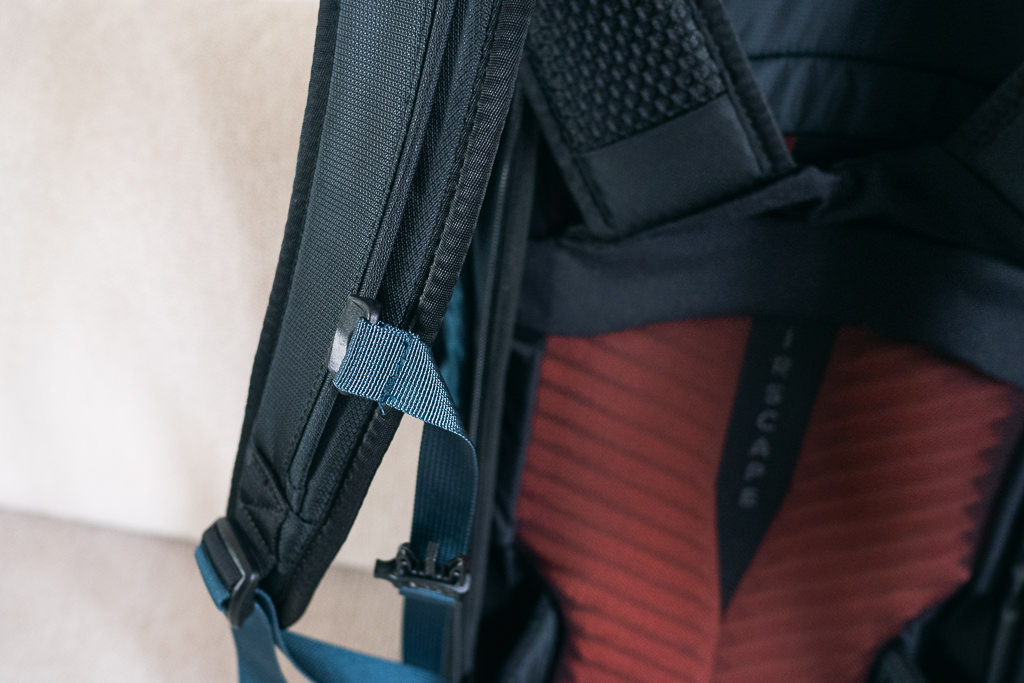
The Farpoint 40 has a fully-featured harness, with lots of padding and all the different kinds of straps (including load lifters), clearly showing off Osprey’s heritage as a trekking backpack manufacturer.
A great feature is the ability to adjust the whole backpack to your torso height. I definitely recommend tweaking this correctly as this can have a huge impact!
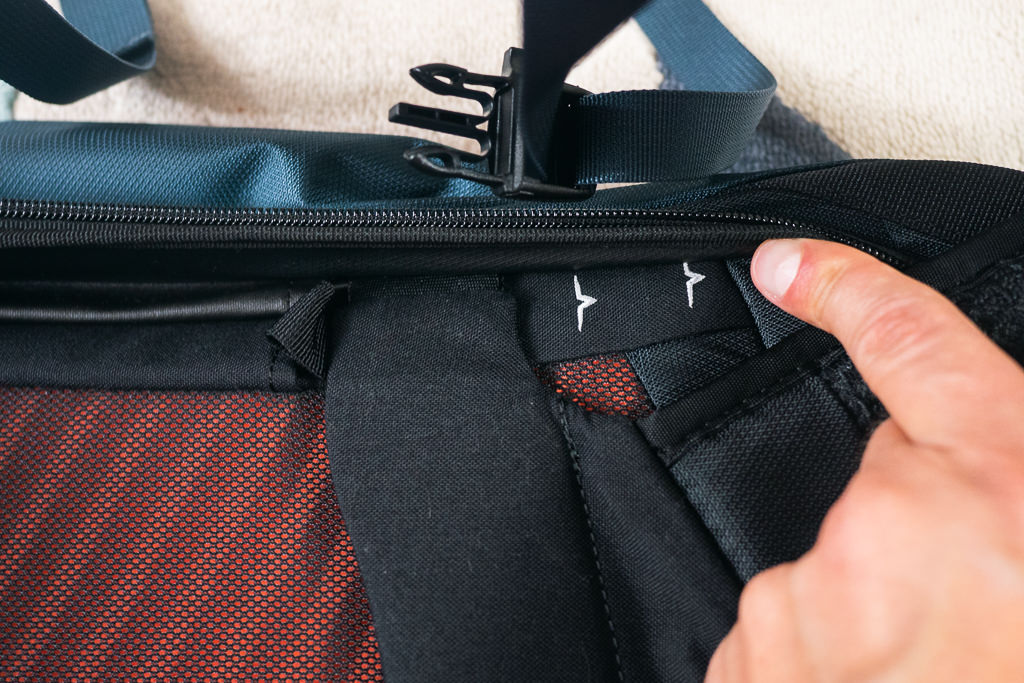
Now, I must admit that initially, I didn’t think the Farpoint 40 was all that comfortable when I first used the previous edition many years ago. I would sometimes get sore shoulders after carrying it for a while.
But I discovered that I was using this backpack like a complete newbie… it should not be hanging like some lazy sloth around your neck!
Using all the straps correctly is key. Just follow these steps for maximum comfort:
- Close the sternum strap and tighten it so that much of the wight is ‘hanging’ from your chest. Think about how indigenous people in the Andes can carry tons of weight in just a cloth sack that’s tied together on their chest — you can do this too with your backpack! Using the sternum strap is essential.
- Close the hip belt and keep it nice and tight. This will distribute some weight to your hip.
- Pull the load lifter straps. These are the little straps attached to the top of your shoulder straps. Pull them so that the top of the backpack comes closer to your body, so your whole back can help carry the load.
- Pull the two little straps on the sides of your hip. Tighten them so the bottom of the backpack also is closer to your body.
If you do this well, you should feel the backpack lining up perfectly with your back, distributing the weight across your whole body. Your shoulders should be doing only a small part of the job.
When worn properly, the Farpoint 40 will be very comfortable. I’ve carried the Farpoint 40 backpack for hours on end without issues. I’ve even taken it on multi-day treks, including the 5-day trek to Annapurna Basecamp in the Himalayas, and trekking through the Cape Verde islands in Africa. In both cases, I was wearing it nonstop for at least 6 or 7 hours a day.
I don’t necessarily recommend the Farpoint 40 for hardcore trekking where you bring your own tent and gear. For this you should buy a dedicated trekking backpack. But if you just plan to do several hikes or treks (with accommodation) during your travels, then it’s got that covered for sure.
Downsides of the Farpoint 40
While I love this backpack, it isn’t perfect in every way. One criticism is that the organizational features inside can be a little spartan.
Sure, there are a few pockets and pouches to store smaller items, but there are many backpacks that have a lot more separate storage spaces. This does also make them a bit heavier, so there’s always a trade-off.
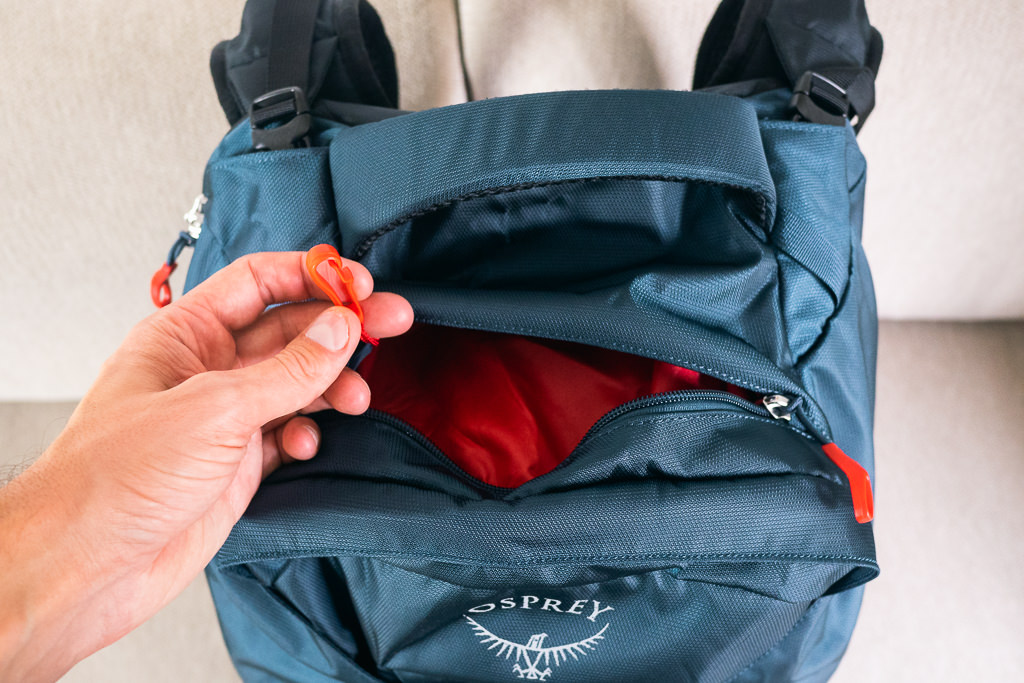
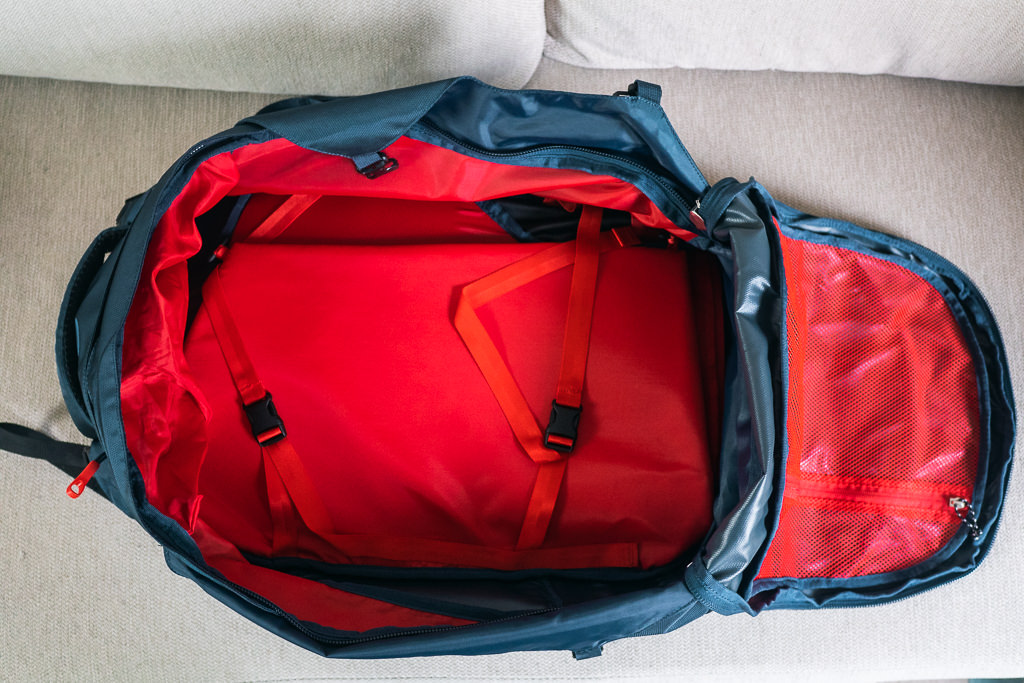
The main compartment is really just one big space, though it has one zipped mesh compartment.
To organize this space a lot better, be sure to get some packing cubes. It’s a small upgrade that will make a big difference.
You could also buy a nice travel organizer to bring a bit more organization into the Farpoint 40.
How much fits inside?
It fits a lot more than you might think!
Keep in mind that product images can be a bit deceiving. Yes, the Farpoint 40 might look a bit small. Some first-time travelers panic and get the insanely huge Farpoint 70, but I’ve often heard of travelers exchanging it for a smaller version.
70+ liter bags are really best for extended camping/trekking/etc. But if you’re just going to be traveling, then around 40 or 55 liters should be sufficient in most cases. Ask people who have gone backpacking (traveling) and they’ll probably give you this same advice.
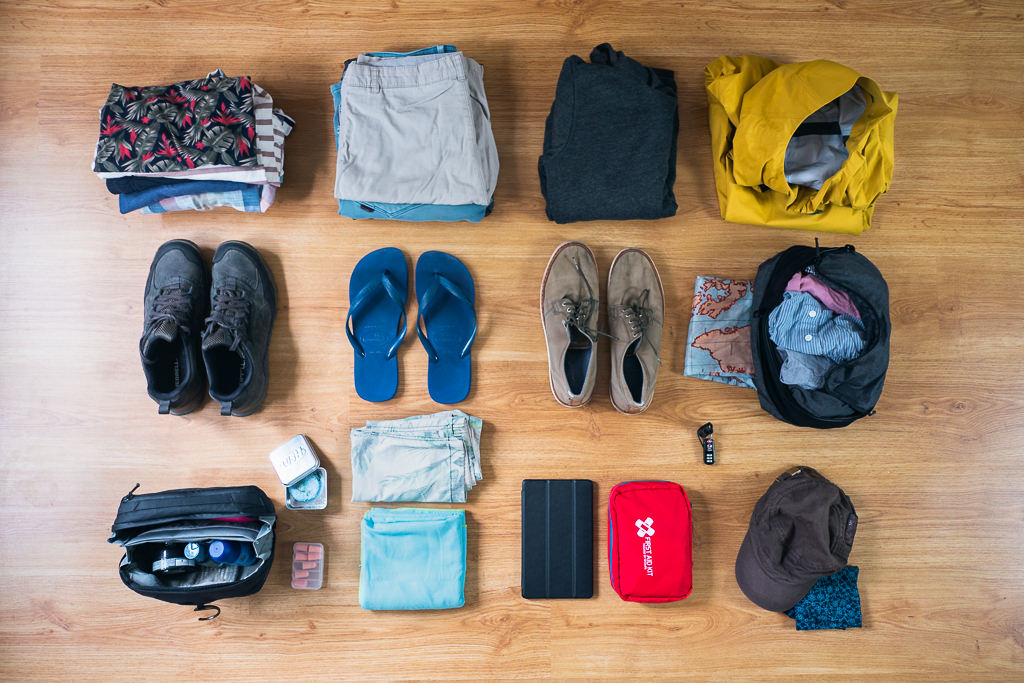
Personally, I always travel with a ~ 40-liter carry-on bag in combination along with a smaller daypack. A daypack that works quite well in combination with the Farpoint is the Osprey Daylite.
I’ve done an article showing exactly everything I pack for a trip and it features the Farpoint 40, so for a good idea of what will fit, be sure to check it out.
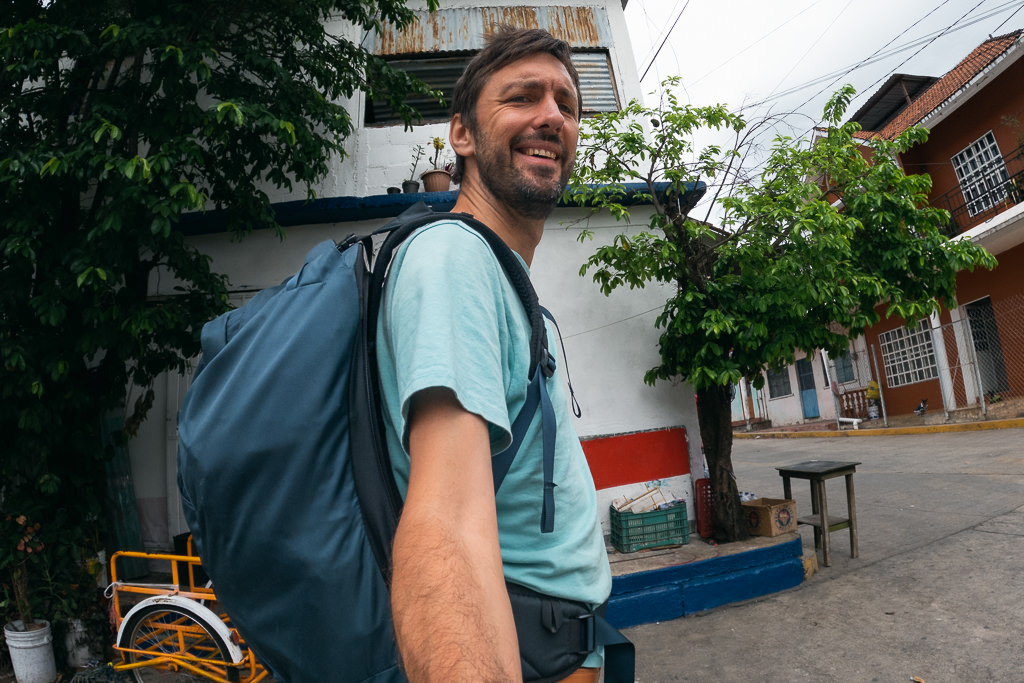
What about the Fairview?
The Osprey Fairview 40 is simply the women’s specific edition.
Functionally there are no differences, however the Fairview comes in a few different colors, has some tweaks to better fit a woman’s body, and the capacity is a few liters less than the men’s edition.
Although the Farpoint started out as a unisex product, for women it’s best to get the Fairview.
Some links may be affiliate links, meaning I may earn commission from products or services I recommend. For more, see site policies.
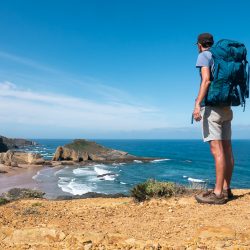
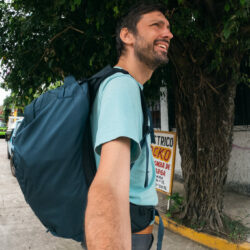



Great post for a great backpack! And spot on about the organizational cons. Do you have any remedies or recommendations?
My suggestions include a few options:
– External Modifications: tailor stitching some flat pouches on the shoulder straps, waist belt and also possibly lower part of the back panels, and re-purposing the shove-it pocket to hold a hydration bladder.
– Internal Modifications: using origami dividers to compartmentalize the main compartment (or e.g. like the pakt 2.0), tailor stitching a side pouch to act as an hidden wallet, and maybe also splitting the lid mesh into separate parts.
Would be interested to hear your thoughts?
I’m not crafty enough to add such features myself but they sound like great ideas! I would maybe try to add side pouches on both sides of the main interior space for small items, then use packing cubes or other accessories to subdivide the space.
Is there a way to attach the Osprey Daylite to the Farpoint 40 that you’ve discovered?
Yeah I talk about this in the video review here: https://youtu.be/PXkJxiWz8YM?t=1418
There’s not an official way but you can still kinda do it.
Have you used the Kelty Redwing 44? I believe it’s also within the same category as the Osprey Farpoint 40. Would love to hear your thoughts on that.
Not yet, I hope to review it sometime